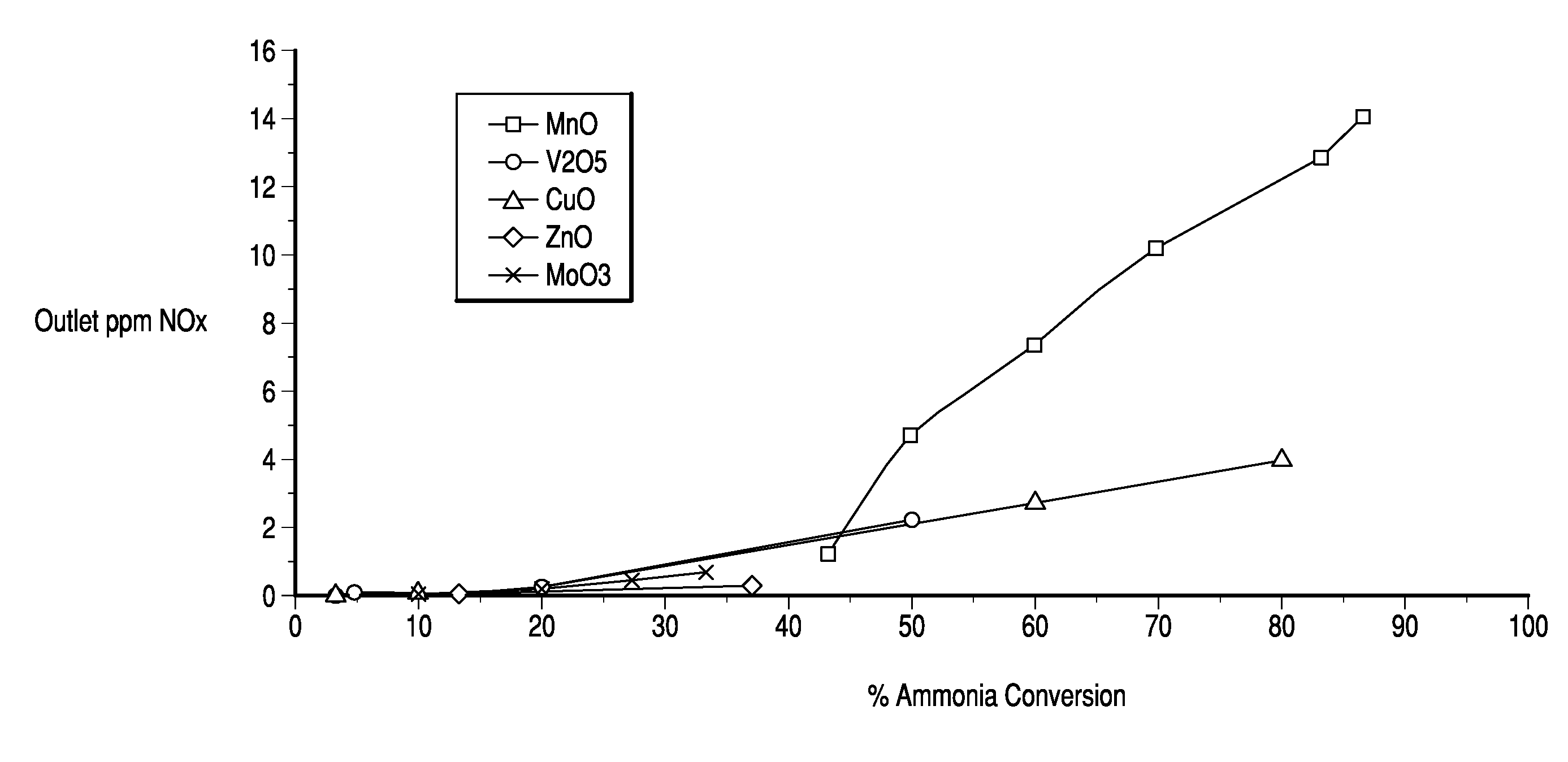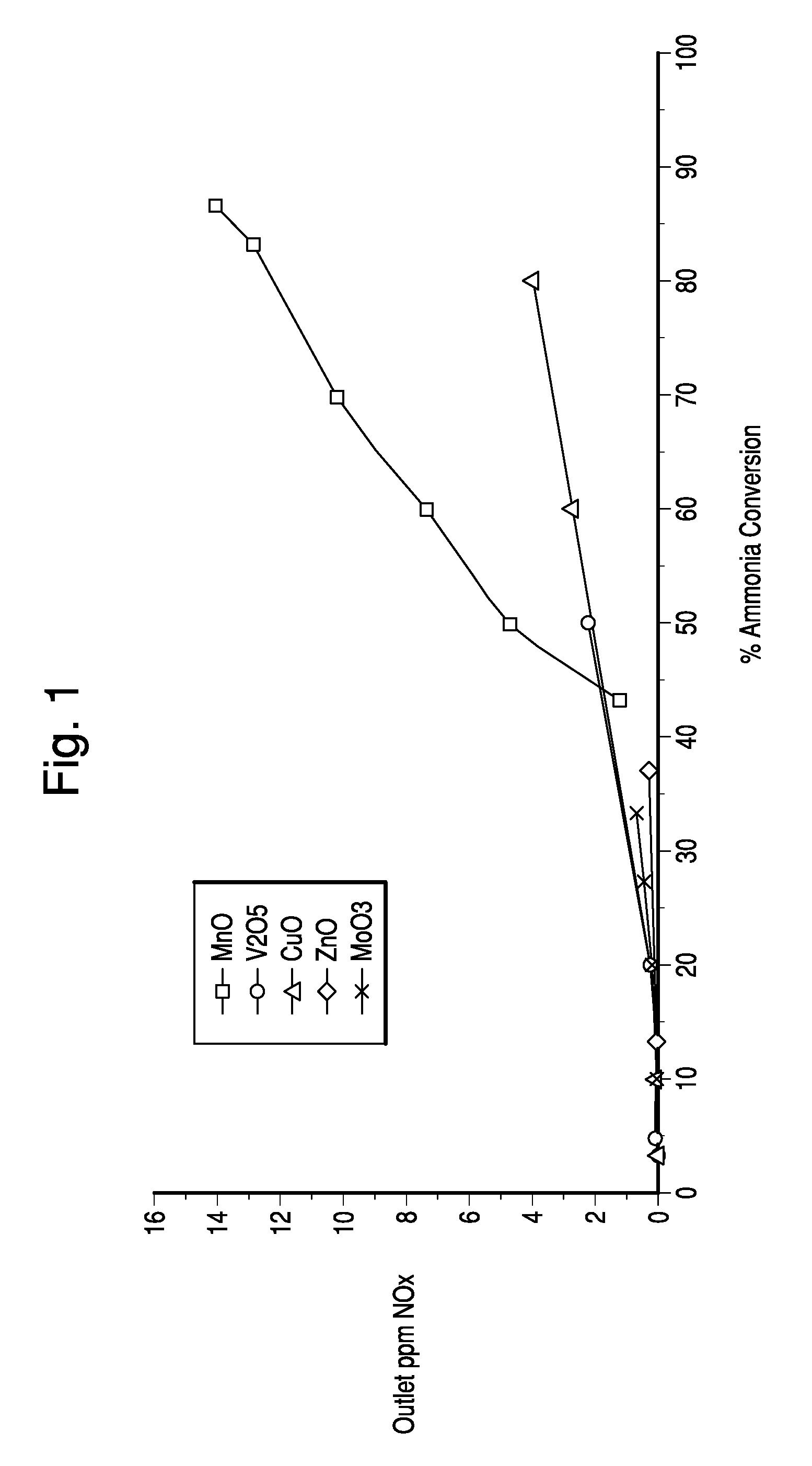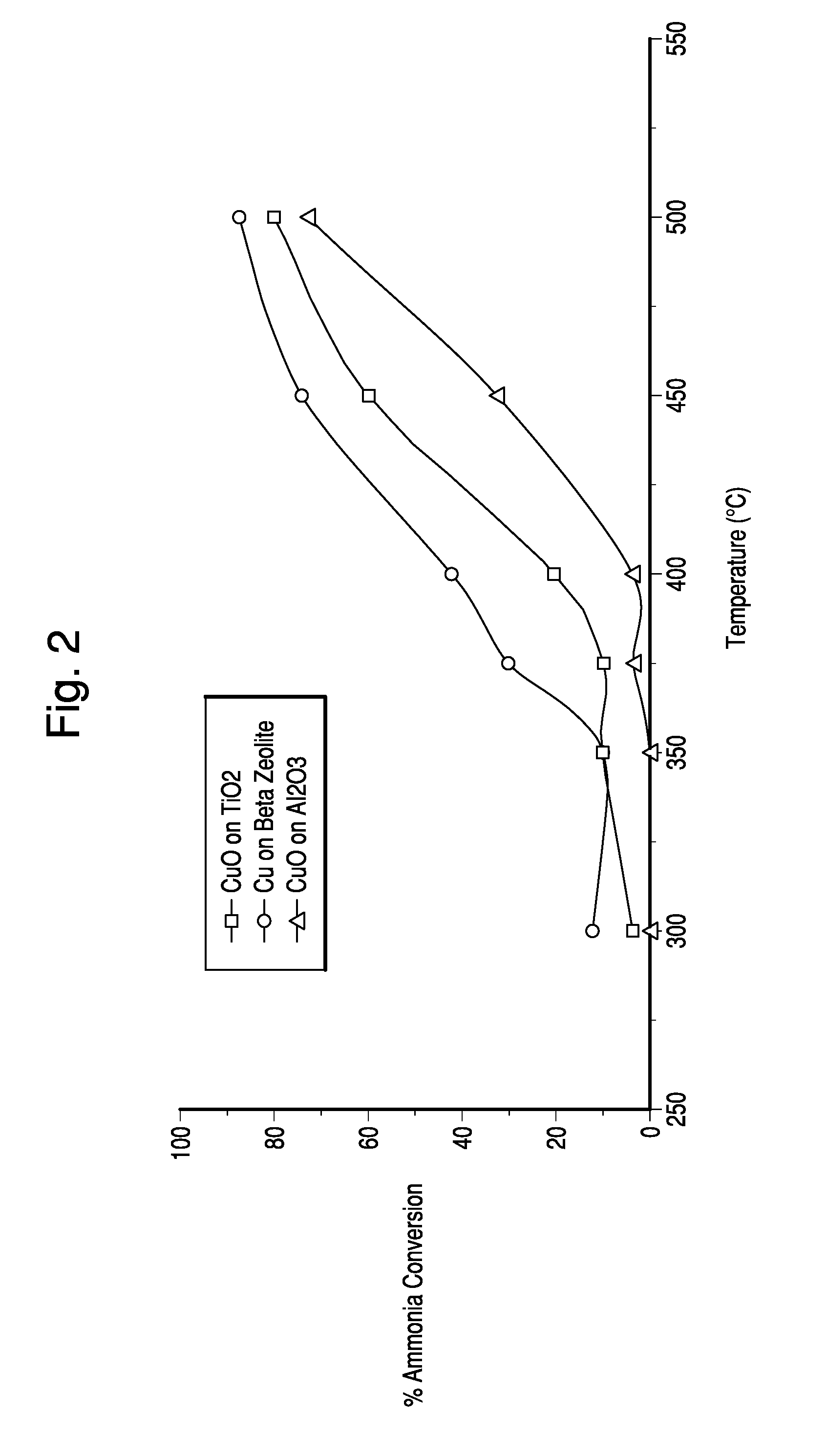Ammonia Oxidation Catalyst for Power Utilities
- Summary
- Abstract
- Description
- Claims
- Application Information
AI Technical Summary
Benefits of technology
Problems solved by technology
Method used
Image
Examples
example 1
[0067]51.25 g of a metal sulfate was added to 81.89 g DI water and stirred on magnetic stirrer until the copper sulfate was dissolved. 189.7 g of DT51 TiO2 was added slowly to the copper solution. The solution was allowed to dry overnight at 150° C. and was calcined at 400° C. for 2 hrs. 150 g of the calcined powder was added to 225 g of DI water and sheared using a Waring blender for 1 min. The slurry was washcoated onto 1″×1″×6″ cordierite honeycomb substrate at a target loading of 1.7 g / in3 and calcined at 550° C. for 2 hrs.
[0068]This procedure was repeated to prepare cordierite honeycomb substrates containing V2O5, MnO, CuO, ZnO and MoO3. The substrates were tested for ammonia conversion and outlet NOx. The results are shown in FIG. 1.
example 2
[0069]25 grams of Cu acetate monohydrate (FW=199.65) or 29 grams of Cu nitrate hemipentahydrate (FW=232.59) were dissolved in 1800 ml de-ionized water in a 2-liter beaker under stirring at room temperature. After a clear solution was obtained, 220 grams of zeolite was added slowly. Zeolite, TiO2 or Al2O3 powder was added to the above solution. The suspension was stirred at room temperature overnight. The solid powder was separated from the liquid by filtration. The cake was washed with de-ionized water three times (200 ml water each time) and oven dried at 100° C. The powder was calcined at 500° C. in air for 5 h. The calcined powder was then slurried and dip coated onto a cordierite honeycomb substrate.
[0070]The honeycomb substrates were tested for ammonia conversion and outlet NOx at various temperatures. Results are shown in FIGS. 2 and 3.
example 3
[0071]114.4 g of DI water and 49.77 g copper (II) nitrate was added to Waring blender cup and mix until copper nitrate dissolved. 121.5 g of zeolite Y powder was added to the blender slowly with continuous mixing. The slurry was then washcoat onto a 1″×1″×6″ cordierite honeycomb substrate at a target loading of 1.7 g / in3 and calcined at 550° C. for 2 hrs. The coated substrate was tested for outlet ammonia and NOx and ammonia conversion during aged at 375° C. for 150 hours, and then at 450° C. for an additional 150 hours. The results are shown in FIG. 4.
PUM
| Property | Measurement | Unit |
|---|---|---|
| Temperature | aaaaa | aaaaa |
| Angle | aaaaa | aaaaa |
| Density | aaaaa | aaaaa |
Abstract
Description
Claims
Application Information
 Login to View More
Login to View More - R&D
- Intellectual Property
- Life Sciences
- Materials
- Tech Scout
- Unparalleled Data Quality
- Higher Quality Content
- 60% Fewer Hallucinations
Browse by: Latest US Patents, China's latest patents, Technical Efficacy Thesaurus, Application Domain, Technology Topic, Popular Technical Reports.
© 2025 PatSnap. All rights reserved.Legal|Privacy policy|Modern Slavery Act Transparency Statement|Sitemap|About US| Contact US: help@patsnap.com



